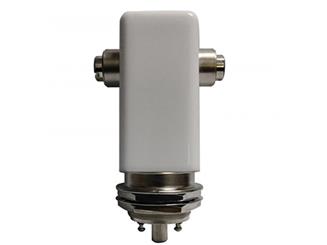How to order a suitable high voltage relay?
High voltage relays are switch devices that can handle high voltages, typically used in applications at the kilovolt level and above. Depending on different needs, they can be vacuum relays, gas-filled relays, or DC solid-state relays.
-
Gas-filled relays: These contain gas (such as nitrogen or sulfur hexafluoride) to help extinguish arcs when switching high voltages. They can handle very high voltages and currents and are commonly used in power transmission and distribution systems.
-
Vacuum relays: These operate in a vacuum environment, preventing arc formation and allowing better handling of high voltages with less wear. They switch quickly, are durable, and operate quietly, making them suitable for high voltage circuits requiring rapid switching, such as in radio frequency transmission and power distribution systems.
|
Application |
SF6 Gas with |
SF6 Gas with |
Vacuum with Tungsten/Molybdenum Contacts |
Vacuum with |
|
Load Bearing Only (DC) |
Possible, but lower current due to increased contact resistance from gas |
Good, but lower current due to increased contact resistance from gas |
Very good, but not as capable as copper contacts |
Best |
|
Load Bearing Only (RF) |
Not good, as gas affects RF carrying capacity |
Not good, as gas affects RF carrying capacity |
Good, but not as capable as copper contacts |
Best |
|
Making and Breaking |
Good for making contact but can only break small currents |
Good for making contact but can only break small currents |
Best |
Rarely used, only for very small currents |
|
Making Contact Without Breaking Load |
Best |
Good, but not as good as harder material contacts |
Good |
Rarely used, only for very small currents |
|
Long-term Non-use or Requires Low and Stable Leakage Current |
Best when marked for make-only relays |
Good, better than hard contacts in vacuum but with less carrying capacity |
Good, but may experience surge currents at higher voltages |
Rarely used, surge currents at higher voltages |

10A to 180A DC to DC Solid State Relay
10A to 180A DC to DC Solid State Relay, 60V, 100V, 200V, 600V, 1200VDC.
Read More
RCBO - electronic and magnetic type, type A and AC, maximum up to 40A
6kA RCBO, 4P/2P, type A/AC, 6A to 40A, electronic and magnetic tripping
Read More
Greegoo's Arc Fault Circuit Interrupter (AFCI) detects arc faults and de-energizes the circuit before a fire can start, is coming soon.
Greegoo's combination AFCIs electronically identify unique current and voltage characteristics of all arc faults and de-energize the entire circuit when one occurs.
Read More
Applications and Advantages of IGBT Modules in Industrial Equipment
An IGBT is a semiconductor device that combines the high-speed switching performance of a power MOSFET with the high-voltage high-current handling capabilities of a bipolar transistor.
Read More














